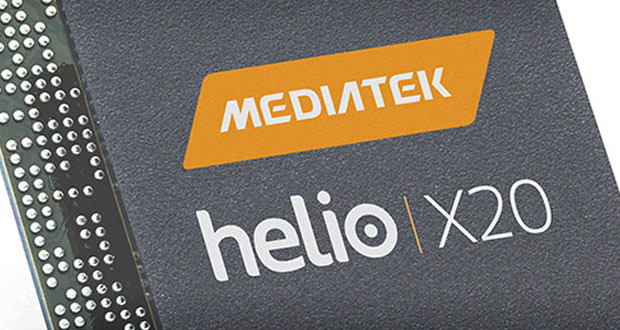The approach big.LITTLE ARM is extended by MediaTek with Helio X20, new SoC that will hit the market in early 2016 to 10 core divided into 3 distinct clusters. Thank CorePilot 3.0 the system will choose the best cluster in terms of energy efficiency.
It comes from MediaTek, which announced officially today, the first SoC for mobile devices equipped within itself of as many as 10 cores, available in 3 different clusters. Let’s talk about Helio X20, name architecture developed by MediaTek to meet the different needs of processing their mobile device using the best core among those available depending on the type of processing to be performed.
The most laborious calculations are handled by the pair of core ARM Cortex-A72, characterized by a clock frequency of 2.5 GHz; for elaborations less intense there are two blocks quad core, both based on the architecture Cortex-A53 one to 2 GHz clock and the other at 1.4 GHz. The operating logic is on the card very simple: as a function of power level calculation required by the specific processing in progress the system will require the use of one of these clusters, leaving others inactive so as to obtain a higher-energy efficiency.
The underlying principle is clear and is the same at the basis of big.LITTLE ARM, here an extreme using 3 different cluster for processing. The choice of which core is used is relegated to the algorithm scheduling CorePilot 3.0, called to schedule such tasks are carried out by that cluster processing depending on the computing power required, the level of fuel consumption and technical specifications in terms of dissipation heat.
According to data provided by MediaTek, the presence of 3 different cluster allows a higher-energy efficiency, which translates into a reduction in consumption of up to 30% compared to traditional architectures big.LITTLE consist of two clusters in opposition. The logic of the triple cluster is that it can provide, moment by moment, the best resource processing possible by evaluating the relationship between consumption and required computing power made available.
Integrated into the SoC, as well as 3 cluster with 10 cores total, we also find a GPU Mali-T880 that offers superior energy efficiency with respect to the proposal of the previous generation. It lacks support for LTE modem CAT6, the ability to manage up to 32MP cameras if single type or up to 13mp if you use two cameras for shooting in stereo 3D. The implementation of the GPU also makes it possible to manage screens with refresh rate of up to 120Hz, all to the advantage of a higher stability of the displayed images.
The SoC MediaTek Helio X20, built using 20-nanometer production technology, will be available for the first test by partners OEMs during the third quarter of 2015, with expected availability in products intended for sale since the beginning of 2016.
The introduction of an approach big.LITTLE 3 cluster is from a purely technological, very interesting, but we must assess the actual impact in terms of energy efficiency compared to approaches with 2 quad core cluster. It is clear that in terms of marketing this product, the 10-strong core, represents an interesting weapon to MediaTek, but remember as unlike traditional PC processors worldwide SoC availability of so many cores does not imply their simultaneous use and parallel. If not, after all, it is to frustrate all efforts should be made to minimize power consumption and make the operation as efficient as possible.

